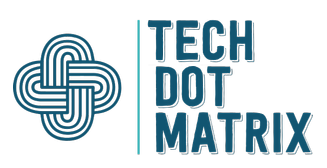
In the ever-evolving landscape of the digital age, the demand for convenience has led to a surge in the popularity of food delivery apps. As entrepreneurs and businesses explore the idea of developing their food delivery platform, a critical question arises: How much does it cost to build a food delivery app? This article aims to provide a comprehensive guide to the various factors influencing the cost of developing a food delivery app.
Building a food delivery app involves a multifaceted process with various factors contributing to the overall cost. Entrepreneurs and businesses should carefully consider their requirements, target audience, and budget constraints while embarking on the journey of app development. By understanding the key elements influencing costs, stakeholders can make informed decisions and ensure the successful creation of a feature-rich and user-friendly food delivery app.
Cost Considerations in Developing a Food Delivery App
- Features and Functionality: The cost of building a food delivery app heavily depends on the features and functionalities integrated into the platform. Basic features include user registration, menu browsing, order placement, payment processing, and order tracking. Advanced features such as real-time GPS tracking, push notifications, reviews and ratings, and personalized recommendations contribute to a more sophisticated and user-friendly app but also add to the overall development cost.
- Platform (iOS, Android, Web): Deciding which platforms to launch the app on—iOS, Android, or both-impacts development costs. Each platform has its unique development requirements, and the cost may vary based on the complexity and design nuances specific to each operating system. Additionally, developing a web version of the app extends the user base but adds to the overall development cost.
- Design and User Experience: The success of any application hinges on the pivotal aspect of having an interface that is visually enticing and user-friendly. Investing in a well-designed user experience (UX) and user interface (UI) enhances customer engagement and satisfaction. The cost of design includes graphic design, wireframing, prototyping, and testing.
- Backend Development: The backend of a food delivery app involves server development, database management, and API integration. A robust and scalable backend is essential for seamless communication between the app and the server. The complexity of the backend structure, as well as the choice of technology stack, significantly influences development costs.
- Payment Integration and Security: Secure and seamless payment processing is a fundamental aspect of any food delivery app. Integrating payment gateways and ensuring the security of transactions are critical considerations. Compliance with industry standards and regulations adds an extra layer of complexity and may impact development costs.
- Geographic Location and Development Team: The cost of developing a food delivery app can vary based on the geographic location of the development team. Rates for app development services differ globally, with factors such as labor costs and expertise influencing the overall cost. Additionally, the size and expertise of the development team, including project managers, developers, and quality assurance specialists, play a role in determining the overall cost.
Conclusion:
In conclusion, the cost of building a food delivery app is a nuanced consideration that depends on a multitude of factors. From the complexity of features and functionalities to the choice of platforms, design elements, backend development, payment integration, and the geographic location of the development team, each aspect contributes to the overall expense.
Entrepreneurs and businesses must approach the development process with a clear understanding of their specific needs, target audience, and budget constraints. While a feature-rich and user-friendly app is essential for success in the competitive food delivery industry, careful planning and strategic decision-making can help manage development costs effectively.
Moreover, it’s crucial to view the investment in a food delivery app as a long-term strategy, considering the potential returns in terms of increased customer engagement, brand loyalty, and revenue generation. By staying informed about industry trends, technology advancements, and user preferences, app developers can create a product that not only meets current expectations but also adapts to the evolving demands of the market.
In the rapidly changing digital landscape, where convenience and efficiency are paramount, a well-developed food delivery app has the potential to become a valuable asset for businesses. As the industry continues to evolve, entrepreneurs and developers should remain flexible, open to innovation, and committed to delivering an exceptional user experience to stand out in this dynamic and competitive market.
You might also like our TUTEZONE section which contains exclusive tutorials on how you can make your life simpler using technology.




